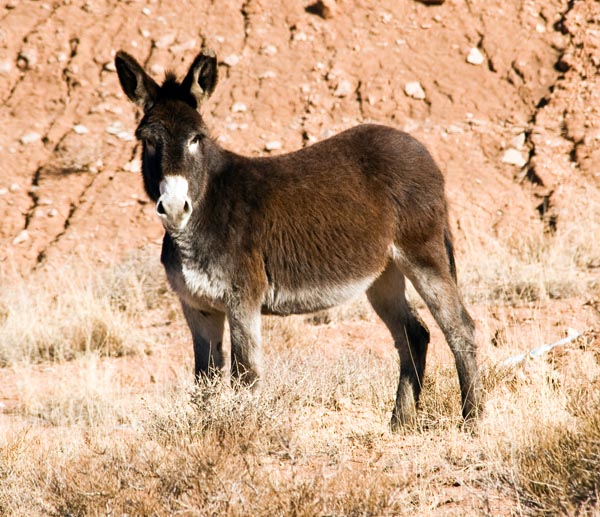Wild Donkeys

I can love a person without knowing their history but I cannot understand a person unless I know their past. I have a few friends who have been created not only from blood but also from earth. They are as much the product of the places they love as they are of those people who love them. Sometimes, in visiting their past, I better understand their present.
We drove together, a friend and I, to a place that has shaped his adult years. It is hard country, a land where nature has rubbed the skin from the earth and its bones stick through. It is far from anywhere. The roads are rough, where they exist. Most were forced through the desert decades ago by men in search of uranium. In places abandoned shafts stare down from imposing peaks and rocky crags like sad, unseeing eyes. Those who dug them mostly left the land broken men, with shattered dreams and the seeds of premature death growing malignantly in their lungs. But this place was a man-killer long before the uranium boom. The old Spanish Trail from Santa Fe to the Pacific Ocean makes an improbably long arc northward through the area, so as to avoid the Grand Canyon and the deadly heat of the Sonoran deserts to its south. As harsh as this place is, it was the lesser of two evils. And nature forced each traveler to pay a toll for taking this easier way, often in their own blood.
Wild horses roam here. Over the centuries their ancestors were abandoned by their owners, scattered during raids, or lost through negligence. The strongest survived and today their grandchildren wander an area nearly the size of Delaware, perpetually in search of water and food but free. A few donkeys also remain, burros as the Spanish called them. They number in the dozens. Smaller and slower than horses they are easier prey for mountain lions and coyotes. And yet they live, doughty, determined, too obstinate to yield, persisting in a place too hot in the summer, too cold in the winter, too dry the year round, in a country seemingly inimical to life itself.
Neither of us had seen a wild burro since the last days of Nixon’s presidency. They are scarce, skittish and scattered. But as we rounded a bend in the road we unexpectedly happened upon a herd of seven, partially hidden in a rock-strewn ravine a few hundred yards away. They browsed on sparse dry brush, their ears erect, keeping a very careful eye on us. We stopped, astonished, fascinated, and quietly watched. Our presence obviously made them uneasy so we left reluctantly, all too soon. But as we rounded the very next corner we found three more burros warily grazing a stone’s throw from the road. Again we stopped and silently watched. We could see the animals easily, clearly. They were well-fed and healthy in spite of the place they live. And again, finally, having disrupted their feeding, we felt compelled to leave before we were ready.
We could not help but discuss them as we drove through the darkness, homeward. Asses are always described derisively, referred to pejoratively. Perhaps these desert donkeys, these survivors, deserve better.




Beautiful story. I have also been shaped by the wilderness I live in the Adirondack Park. Like the burro my ancestors came here several generations ago.
Thanks. I ,too, was thrilled to see wild burros on trip to Sheldon Wildlife Preserve in Nevada. Nature inspires me!